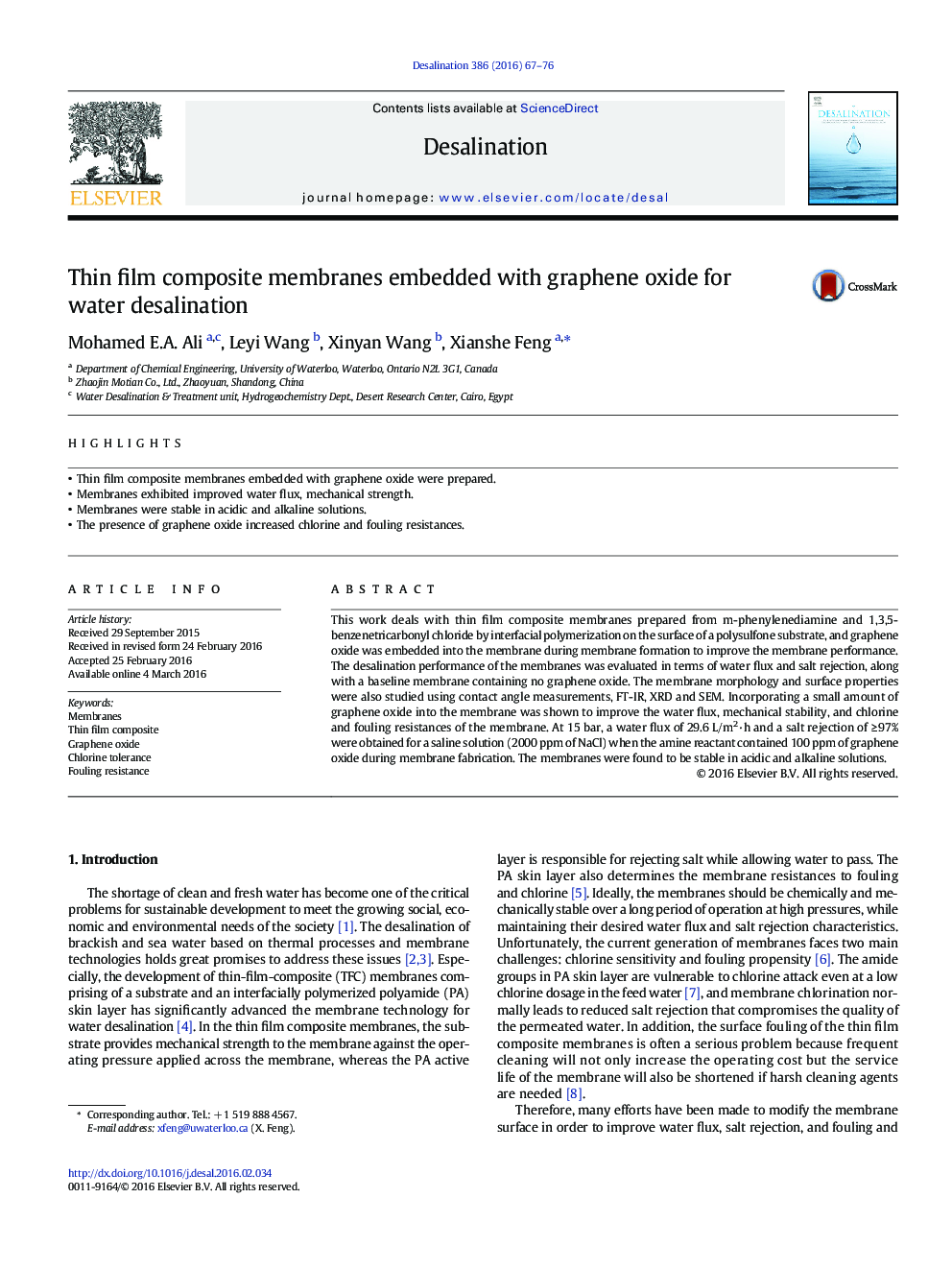| Article ID | Journal | Published Year | Pages | File Type |
|---|---|---|---|---|
| 622871 | Desalination | 2016 | 10 Pages |
•Thin film composite membranes embedded with graphene oxide were prepared.•Membranes exhibited improved water flux, mechanical strength.•Membranes were stable in acidic and alkaline solutions.•The presence of graphene oxide increased chlorine and fouling resistances.
This work deals with thin film composite membranes prepared from m-phenylenediamine and 1,3,5-benzenetricarbonyl chloride by interfacial polymerization on the surface of a polysulfone substrate, and graphene oxide was embedded into the membrane during membrane formation to improve the membrane performance. The desalination performance of the membranes was evaluated in terms of water flux and salt rejection, along with a baseline membrane containing no graphene oxide. The membrane morphology and surface properties were also studied using contact angle measurements, FT-IR, XRD and SEM. Incorporating a small amount of graphene oxide into the membrane was shown to improve the water flux, mechanical stability, and chlorine and fouling resistances of the membrane. At 15 bar, a water flux of 29.6 L/m2·h and a salt rejection of ≥ 97% were obtained for a saline solution (2000 ppm of NaCl) when the amine reactant contained 100 ppm of graphene oxide during membrane fabrication. The membranes were found to be stable in acidic and alkaline solutions.
